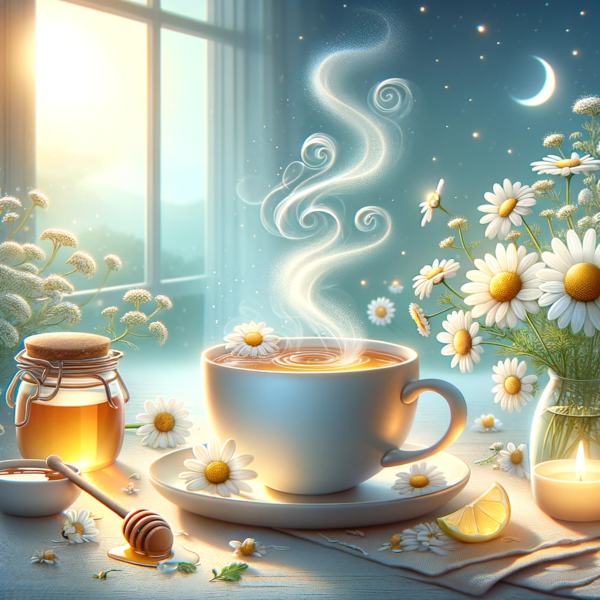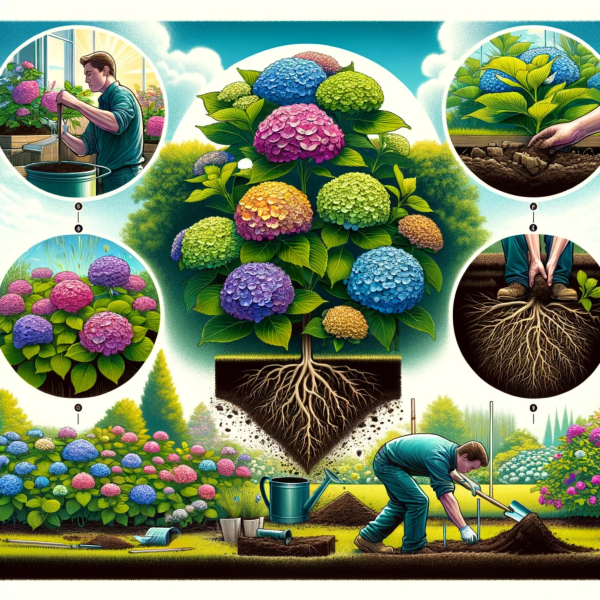When it comes to creating a beautiful and vibrant garden, understanding the differences between annuals and perennials is essential. These two types of plants have distinct characteristics that can greatly influence the overall appearance and longevity of your garden. Whether you are a seasoned gardener or just starting out, knowing the benefits and drawbacks of each type will help you make informed decisions and create a garden that thrives.
Annuals are plants that complete their life cycle within one year. They sprout from seeds, grow, flower, produce seeds, and die, all in the span of a single growing season. One of the key advantages of annuals is their ability to provide a burst of color and beauty to your garden in a relatively short period of time. They are known for their vibrant blooms and can be an excellent choice for adding instant visual impact to your outdoor space.
On the other hand, perennials are plants that live for more than two years. Once established, they will come back year after year, bringing beauty and charm to your garden. Perennials often have a longer blooming period compared to annuals, which means you can enjoy their flowers for a more extended period. They also tend to have deeper and more extensive root systems, making them more resilient to drought and other environmental stresses.
Understanding the differences between annuals and perennials is crucial for planning and designing your garden. If you are looking for a colorful and ever-changing display, incorporating annuals into your garden is a great choice. However, if you prefer a more permanent and low-maintenance landscape, perennials are the way to go. By combining both types of plants strategically, you can create a garden that offers a balance of long-lasting beauty and seasonal variety.
Defining Annual and Perennial Plants
When it comes to gardening, it's important to understand the difference between annual and perennial plants. These terms refer to the lifespan of a plant and can greatly impact your garden design and maintenance.
An annual plant is one that completes its life cycle in a single growing season. This means that it germinates, grows, flowers, sets seed, and dies all within one year. Annuals are known for their vibrant and showy blooms, making them popular choices for adding color to flower beds and containers.
Perennial plants, on the other hand, have a longer lifespan. They typically live for multiple years, with some varieties lasting for decades. Perennials may die back to the ground during winter, but their roots remain alive and they regrow in the spring. This allows them to come back year after year, making them a great investment for a long-lasting garden.
One key advantage of annuals is their ability to provide continuous color throughout the summer. Since they complete their life cycle in one year, they have a shorter blooming period but often produce more flowers than perennials. Perennials, on the other hand, may have a shorter blooming period, but they often have a longer overall lifespan and can provide consistent beauty year after year.
When planning your garden, it's important to consider the balance between annuals and perennials. Annuals can provide immediate impact and fill in gaps between perennials, while perennials offer long-term structure and stability. By combining both types of plants, you can create a garden that is both visually stunning and sustainable.
Whether you choose to plant annuals, perennials, or a mixture of both, understanding their differences will help you make informed decisions about your garden. Consider factors such as lifespan, blooming period, and desired maintenance level to create a garden that suits your personal preferences and gardening goals.
What is the definition of an annual plant?
An annual plant is a type of plant that completes its life cycle within one year. This means that it germinates from a seed, grows, flowers, produces seeds, and then dies, all within a single growing season. Annual plants are known for their fast growth and abundant flowering.
Unlike perennial plants, which live for multiple years, annual plants are not able to survive through the winter and will die off once the cold weather arrives. However, many annual plants are able to produce a large number of seeds before they die, ensuring that their species will continue in the following growing season.
Annual plants are popular choices for gardeners who want to add quick bursts of color and variety to their landscapes. They are often used in flower beds, containers, and hanging baskets, as they can provide a vibrant display of blooms throughout the summer months.
Some common examples of annual plants include marigolds, petunias, zinnias, and sunflowers. These plants are typically easy to grow from seed and require minimal maintenance, making them great choices for beginner gardeners.
It's important to note that not all plants labeled as 'annuals' will truly complete their life cycle within one year. In some cases, certain plants may behave as perennials in warmer climates or under specific growing conditions. It's always a good idea to do some research or consult with a gardening expert to ensure that you are choosing the right plants for your specific region and needs.
In conclusion, annual plants are plants that complete their life cycle within one year, providing quick bursts of color and variety to gardens. They are easy to grow and maintain, making them popular choices for many gardeners.
What defines a perennial plant?
A perennial plant is a type of plant that lives for more than two years. Unlike annuals, which complete their life cycle within one growing season, perennials continue to grow and bloom year after year. They have the ability to survive the dormant seasons underground or as dormant buds and re-emerge when the conditions are favorable.
One of the key characteristics of perennials is their ability to develop a strong root system. These roots allow the plant to draw nutrients and water from the soil more efficiently, making them more resilient and able to withstand harsh weather conditions.
Perennials also have the advantage of being able to spread and reproduce through various methods, such as underground rhizomes, bulbs, or offshoots. This ability to propagate themselves ensures their survival and allows them to form dense, long-lasting clumps or colonies.
Another defining feature of perennials is their diverse range of growth habits and forms. They can be tall or short, have woody or herbaceous stems, and produce flowers, foliage, or both. Perennials offer a wide array of colors, textures, and scents, making them invaluable for creating visually appealing and diverse garden landscapes.
Some popular examples of perennial plants include roses, peonies, hostas, daylilies, and daisies. These plants are often cherished by gardeners for their longevity and the beauty they bring to the garden year after year.
short haircuts for women
In conclusion, perennials are a vital component of any garden due to their ability to persist and thrive over multiple years. Their strong root systems, reproductive strategies, and diverse growth habits make them a valuable and enduring addition to any landscape.
Comparing Lifecycles: Annuals vs. Perennials
Understanding the lifecycles of plants is essential for successful gardening. Annuals and perennials are two common types of plants with distinct lifecycles. Knowing the differences between them can help you plan and maintain your garden effectively.
Annuals
Annual plants complete their entire life cycle in a single year. They sprout from seeds, grow, flower, produce seeds, and die within this short period. Some popular annual flowers include marigolds, petunias, and zinnias. Annuals are known for their vibrant colors and ability to provide continuous blooms throughout the growing season.
Since annuals have a short lifespan, they need to be replanted each year. This gives gardeners the opportunity to experiment with different plants and designs every season. Annuals are also great for filling in gaps in your garden and adding temporary bursts of color. They are often used in containers, hanging baskets, and flower borders.
Perennials
Unlike annuals, perennials live for multiple years. They can survive through winter and regrow from the same root system each spring. Popular perennial flowers include roses, lilies, and daisies. Perennials are known for their longevity and ability to provide consistent beauty year after year.
Perennials take longer to establish themselves compared to annuals, but once they are established, they require less maintenance. They are a great choice for creating a permanent garden structure and can be used as focal points or to provide a backdrop for other plants. Perennials also come in a wide range of colors, sizes, and shapes, allowing for endless design possibilities.
Conclusion
Choosing between annuals and perennials depends on your gardening goals and preferences. Annuals are perfect for adding seasonal color and variety, while perennials provide long-term beauty and stability. A well-planned garden can incorporate both annuals and perennials to create a dynamic and visually appealing landscape.
By understanding the lifecycles of annuals and perennials, you can make informed decisions about which plants to include in your garden and how to care for them. Whether you prefer the vibrant bursts of annuals or the enduring charm of perennials, both types of plants have their own unique contributions to make in your garden.
How does the life span of an annual differ from that of a perennial?
Understanding the life span of annuals and perennials is essential for successful gardening. Annuals and perennials differ significantly in terms of their life cycles, which has a direct impact on their growth, flowering, and overall longevity in the garden.
Annual plants complete their life cycle within one year or growing season. They germinate, grow, flower, set seed, and die all within a single year. Some common examples of annuals include marigolds, petunias, and zinnias. While annuals may only live for a short period, they often produce abundant flowers and vibrant colors, making them popular choices for seasonal displays and filling gaps in flower beds.
On the other hand, perennials have a longer life span and can survive for multiple years. They typically live for three or more years, with some perennials lasting for decades. Perennials often have a period of dormancy during the winter months, where their above-ground growth dies back, but their roots remain alive. When the conditions are right, perennials will regrow from their existing root systems and continue their growth and flowering cycle.
Perennials offer the benefit of returning year after year, providing a more permanent presence in the garden. They often form the backbone of a landscape design, providing structure and stability. Examples of perennials include roses, peonies, and hostas. While perennials may take longer to establish and flower than annuals, they offer the advantage of requiring less maintenance and providing long-term beauty.
It's important to note that there are also biennial plants, which have a two-year life cycle. Biennials germinate and grow foliage in their first year, then flower, set seed, and die in their second year. Some examples of biennials include foxgloves, hollyhocks, and sweet William. Understanding the life span of different plant types allows gardeners to plan their gardens accordingly and create a well-balanced landscape.
Choosing Between Annual and Perennial Flowers
When it comes to creating a beautiful garden, one of the most important decisions you'll need to make is whether to plant annual or perennial flowers. Both types of plants have their own unique benefits and considerations, so it's important to understand the differences before making your choice.
Annual flowers are plants that complete their life cycle in just one year. This means that they sprout, grow, flower, produce seeds, and die all within a single growing season. Some popular annual flowers include petunias, marigolds, and zinnias. The main advantage of annuals is that they provide vibrant and continuous color throughout the summer, making them perfect for filling in bare spots or adding pops of color to your garden. However, because they only last for one season, they will need to be replanted each year.
On the other hand, perennial flowers are plants that come back year after year. They have a longer life cycle and can survive through multiple growing seasons. Some popular perennial flowers include roses, tulips, and daisies. The main advantage of perennials is that they require less maintenance than annuals since they don't need to be replanted every year. They also have the ability to spread and fill in empty spaces, creating a more established and cohesive garden over time.
When deciding between annual and perennial flowers, consider factors such as your gardening goals, the amount of time and effort you're willing to invest, and the specific conditions of your garden. If you're looking for quick bursts of color and enjoy experimenting with different plants each year, annuals may be the best choice for you. However, if you prefer a more low-maintenance approach and want a garden that will continue to evolve and grow over time, perennials may be the better option.
Ultimately, the choice between annual and perennial flowers is a personal one and will depend on your individual preferences and circumstances. Whichever option you choose, both annuals and perennials can bring beauty and joy to your garden, so don't be afraid to mix and match or experiment with different combinations.
Are annuals or perennials better?
Deciding whether to grow annuals or perennials in your garden depends on your personal preferences and the specific needs of your landscape. Both types of plants have their own unique advantages and considerations to keep in mind.
Annuals are plants that complete their life cycle in one growing season. They typically bloom quickly and abundantly, providing vibrant color and visual interest to your garden. Annuals are often chosen for their ability to fill in gaps in flower beds and provide a continuous display of blooms throughout the season. They are also a great option for containers and hanging baskets.
Perennials , on the other hand, are plants that live for more than two years. While they may not bloom as quickly or as abundantly as annuals, they offer the benefit of coming back year after year. Perennials are known for their endurance and ability to withstand various weather conditions. They can provide a stable backbone to your garden, providing structure and continuity. Perennials are also a good choice for attracting pollinators and creating a low-maintenance garden.
Ultimately, the decision between annuals and perennials depends on your gardening goals and the specific needs of your landscape. If you enjoy changing up your garden each year and experimenting with different colors and varieties, annuals may be the better choice for you. On the other hand, if you prefer a more permanent and low-maintenance garden, perennials may be the way to go.
Note: It's worth noting that a combination of annuals and perennials can create a well-rounded garden with the best of both worlds. By blending the quick bursts of color from annuals with the enduring beauty of perennials, you can create a dynamic and visually appealing landscape.
What are the disadvantages of annual plants?
While annual plants have their benefits, there are also some disadvantages to consider when incorporating them into your garden:
| 1. Short Lifespan: | Annual plants only live for one growing season. This means that you will need to replant them each year, which can be time-consuming and costly. |
| 2. Limited Bloom Time: | Annuals typically have a shorter bloom time compared to perennials. They may only flower for a few weeks or months, requiring more effort to maintain a continuous display of color throughout the growing season. |
| 3. Higher Maintenance: | Annuals often require more maintenance than perennials. They may need regular watering, fertilizing, and deadheading to keep them looking their best. This can be time-consuming and may require more resources. |
| 4. Less Winter Interest: | Since annuals die at the end of the growing season, they do not provide winter interest in the garden. Perennials, on the other hand, often have attractive seed heads or evergreen foliage that adds visual appeal during the colder months. |
| 5. Limited Adaptability: | Annuals are typically less adaptable to different growing conditions compared to perennials. They may require specific soil types, sun exposure, or temperature ranges to thrive, limiting their versatility in certain garden situations. |
While annual plants can add vibrant color and variety to your garden, it's important to consider these disadvantages before making them a major part of your landscaping plans. By understanding the limitations of annuals, you can make informed decisions about which plants will best suit your garden's needs and your personal preferences.
Examples of Popular Annual and Perennial Plants
Annual plants are known for their vibrant colors and ability to provide continuous blooms throughout the growing season. Some popular annual plants include:
- Marigolds (Tagetes spp.): These cheerful flowers come in various shades of yellow, orange, and red and are known for their ability to repel pests.
- Petunias (Petunia spp.): Petunias are versatile and come in a wide range of colors. They are great for adding a pop of color to flower beds or hanging baskets.
- Zinnias (Zinnia spp.): Zinnias are easy to grow and come in a variety of shapes and colors. They attract butterflies and make beautiful cut flowers.
- Impatiens (Impatiens spp.): These shade-loving flowers are perfect for adding color to areas with limited sunlight. They come in a range of colors, including pink, red, and white.
On the other hand, perennial plants are known for their longevity and ability to come back year after year. Some popular perennial plants include:
- Roses (Rosa spp.): Roses are classic garden flowers known for their beauty and fragrance. They come in a variety of colors and can be grown as shrubs or climbers.
- Lavender (Lavandula spp.): Lavender is loved for its aromatic flowers and ability to attract pollinators. It is also used in various products, such as soaps and essential oils.
- Hostas (Hosta spp.): Hostas are shade-loving plants known for their attractive foliage. They come in a variety of sizes and colors, making them a versatile choice for any garden.
- Daylilies (Hemerocallis spp.): Daylilies are hardy plants that produce beautiful flowers in a range of colors. They are low-maintenance and can thrive in a variety of soil conditions.
By incorporating a mix of annuals and perennials into your garden, you can enjoy a colorful and diverse landscape throughout the year.
What is the most popular perennial plant?
When it comes to perennial plants, there are many popular options to choose from. However, one perennial plant that stands out as a favorite among gardeners is the peony.
Peonies are known for their stunning and fragrant flowers, which come in a variety of colors including white, pink, and red. They are also appreciated for their long blooming period, with flowers often lasting for several weeks in late spring and early summer.
In addition to their beauty, peonies are also relatively easy to care for. They prefer full sun or light shade and well-drained soil. With proper care, peonies can thrive for many years in the garden, making them a popular choice for perennial flower beds.
Peonies are not only loved by gardeners, but they are also a favorite among florists. Their large, showy flowers make them a popular choice for floral arrangements and bouquets, especially for weddings and special occasions.
Overall, the peony is considered one of the most popular perennial plants due to its stunning flowers, long blooming period, and ease of care. Whether you're a seasoned gardener or just starting out, adding a peony to your garden is sure to bring beauty and elegance to your outdoor space.
What is the most popular annual flower?
When it comes to annual flowers, there are many popular choices that gardeners love to plant in their gardens. However, one of the most popular annual flowers is the petunia.
Petunias are known for their vibrant colors and their ability to bloom all summer long. They come in a wide variety of colors, including shades of pink, purple, red, white, and yellow. Petunias are versatile and can be used in flower beds, hanging baskets, or containers, making them a favorite among gardeners.
Another reason why petunias are so popular is because they are relatively easy to grow. They thrive in full sun and well-drained soil, and they do not require a lot of maintenance. With regular watering and occasional deadheading, petunias will continue to bloom and add beauty to your garden throughout the summer.
In addition to their beauty and ease of care, petunias also attract pollinators such as butterflies and hummingbirds. This makes them a great choice for gardeners who want to create a welcoming environment for these beneficial creatures.
Whether you choose to plant petunias in your garden or opt for another popular annual flower, the key is to select varieties that are suitable for your climate and growing conditions. By doing so, you can ensure that your annual flowers will thrive and bring joy to your garden all season long.





